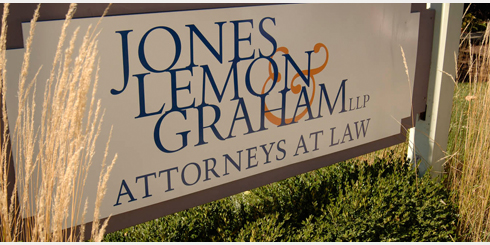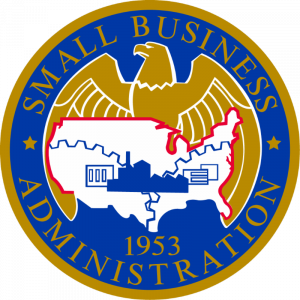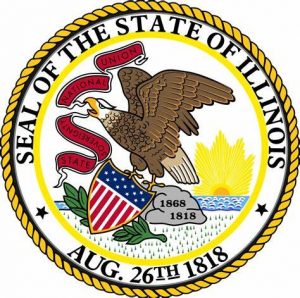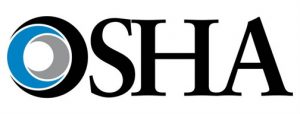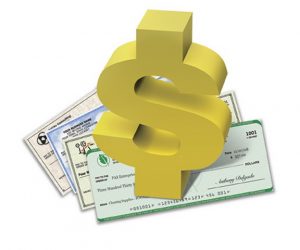How to assure you are using Paycheck Protection Loan proceeds for a permissible purpose and to maximize loan forgiveness
By Christopher J. Graham and Joseph P. Kelly
On March 27, 2020, the Coronavirus Aid, Relief, and Economic Security (“CARES”) Act became law, including the Keeping American Workers Paid and Employed Act which included the SBA’s paycheck protection program. The SBA thereafter issued three Interim Final Rules to implement the new law, with the most recent one being issued on April 14. The SBA also issued multiple “Answers” to “Frequently Asked Questions” (“FAQs”), providing guidance. And more rules and FAQs are expected. There have been some inconsistencies in what’s been coming from the SBA and some issues, in our view, could be clarified.
But, if you received a loan or are about to, you need to act now to assure that you are using the proceeds for a permissible purpose and to maximize loan forgiveness. Based on the new law and the SBA’s interim final rules and “Frequently Asked Questions” (“FAQs”) issued so far (and which may change), here are some things to keep in mind.
Use loan proceeds only for a permissible purpose and according to your “good faith”:
“During the covered period [from February 15, 2020 to June 30, 2020], an eligible recipient may, in addition to the allowable uses of such a loan made under this subsection [(Section 7(a) of the Small Business Act)], use the proceeds of the covered loan for—
(I) payroll costs; (II) costs related to the continuation of group health care benefits during periods of paid sick, medical, or family leave, and insurance premiums; (III) employee salaries, commissions, or similar compensations; (IV) payments of interest on any mortgage obligation (which shall not include any prepayment of or payment of principal on a mortgage obligation); (V) rent (including rent under a lease agreement); (VI) utilities; and (VII) interest on any other debt obligations that were incurred before the covered period.”
(CARES Act, Sec. 1102(a) (2)(F)).
If you received an economic injury disaster loan from the SBA, between January 31 and April 3, 2020, you also may use the proceeds to refinance that loan and must refinance the loan if it was used for payroll costs. (Sec. 1102((a)(2)(F)(iv); SBA Initial Interim Final Rule, at 15-16).
When you applied for the paycheck protection loan, you also were required to “make a good faith certification … acknowledging that the funds will be used to retain workers and maintain payroll or make mortgage payments, lease payments, and utility payments ….” (Sec. 1102(a)(2)(G)).
Using loan proceeds other than for a permitted purpose and according to your certification is not something you want to do! There are severe consequences, including potential charges of crimes under Federal statutes. According to the SBA’s Initial Interim Final Rule:
- If you use PPP funds for unauthorized purposes, SBA will direct you to repay those amounts.
- If you knowingly use the funds for unauthorized purposes, you will be subject to additional liability such as charges for fraud.
- If one of your shareholders, members, or partners uses PPP funds for unauthorized purposes, SBA will have recourse against the shareholder, member, or partner for the unauthorized use.
Use the proceeds for the following costs incurred and payments made during the 8-week period following the initial loan disbursement:
- Payroll costs
- Any payment of interest on any covered mortgage obligation (which shall not include any prepayment of or payment of principal on a mortgage obligation).
- Any payment on any covered rent obligation.
- Any covered utility payments. (Sec. 1106 (b)).
Subject to some exceptions, “payroll costs” … means …
(aa) the sum of payments of any compensation with respect to employees that is a—
(AA) salary, wages, commissions, or similar compensations; (BB) payment of cash tip or equivalent; (CC) payment for vacation, parental, family, medical, or sick leave; (DD) allowance for dismissal or separation; (EE) payment required for the provisions of group health care benefits, including insurance premiums; (FF) payment of any retirement benefit; (GG) payment of State or local tax assessed on the compensations of employees; and
(bb) the sum of payments of any compensation to or income of a sole proprietor or independent contractors that is a wage, commission, income, net earnings from self-employment, or similar compensation and that is in an amount not more than $100,000 in 1 year, as prorated for the covered period [February 15, 2020 to June 30, 2020] ….” (Sec. 1102(a)(a)(A)(viii)).
The SBA clarified that qualified individuals with self-employment income, such as independent contractors and sole proprietors, may use loan proceeds for owner compensation replacement; and that owner compensation replacement—limited to eight weeks’ worth (8/52) of 2019 net profit as reported on their 2019 IRS Form 1040 Schedule C line 31, subject to a $100,000 cap—qualifies for loan forgiveness. (SBA Interim Final Rule dated April 14, 2020). Owner compensation replacement also appears to qualify as “payroll costs.”
The SBA also clarified that “self-employment income of general active partners [of a partnership] may be reported as payroll cost, up to $100,000 annualized, on a PPP loan application filed by a partnership.” (Id.). And, although the SBA has not said so explicitly, it appears that using loan proceeds over the 8-week period to pay a pro rata amount of up to $100,000 in partner self-employment income (8/52 of $100,000 = $15,385) likewise is permissible and qualifies as “payroll costs” and for loan forgiveness. (Id.). A similar rule appears to apply to members of a limited liability company actively involved in managing the company. (Id.) Perhaps the SBA will issue more guidance on these issues.
You could even use the proceeds to cover wages and salaries of additional employees you may hire.
The loan will not be forgiven to the extent you use loan proceeds for any other purpose.
Use at least 75% of the proceeds for costs incurred and payments made for payroll during the 8-week period:
“Not more than 25 percent of the loan forgiveness amount may be attributable to nonpayroll costs.” (SBA Initial Interim Final Rule). If you spend less than 75% on “payroll costs,” your loan obligation will be reduced dollar for dollar. To maximize loan forgiveness, you therefore should spend at least 75% on “payroll costs.”
Use the remaining proceeds only for paying interest on a covered mortgage obligation, rent on a covered lease obligation, or a covered utility payment:
“‘Covered mortgage obligation’ means any indebtedness or debt instrument incurred in the ordinary course of business that—(A) is a liability of the borrower; (B) is a mortgage on real or personal property; (C) was incurred before [February 15, 2020]”; ‘Covered rent obligation’ means rent obligated under a leasing agreement in force before [February 15, 2020]”; “‘Covered utility payment’ means payment for a service for the distribution of electricity, gas, water, transportation, telephone, or internet access for which service began before [February 15, 2020].” (Emphasis added) (Secs. 1106(a)(2) (4), and (5)). Using loan proceeds for those payments reduces the debt dollar for dollar. Be sure to keep invoices relating to those payments, together with proof payment.
Don’t use proceeds to pay interest for a mortgage debt incurred on or after February 15, 2020, rent on a lease agreement that was not in force before February 15, 2020, or any “utility” bill (electricity, gas, water, transportation, telephone, or internet access) for which service began on or after February 15, 2020.
Although permissible under the CARES Act, using proceeds any of those purposes reduces loan forgiveness. (Secs. 1102 (a) (2)(F)); 1106 (a)(2), (4) and (5); 1106 (b)).
Use no more than $15,385 of proceeds for cash compensation of any one employee over the 8-week period following the initial loan disbursement; non-cash employee benefits may exceed that amount:
Although “payroll costs” are a permissible use and the loan is forgivable to the extent used for that purpose, “payroll costs” don’t include “compensation of an individual employee in excess of an annual salary of $100,000, as prorated for the covered period.” $100,000 prorated over 8 weeks is $15,385 (($100,000/52) x 8)). (Sec. 1102(a)(2)(A)(viii)).
The SBA clarified that the “exclusion of compensation in excess of $100,000 annually applies only to cash compensation, not to non-cash benefits, including: • employer contributions to defined-benefit or defined-contribution retirement plans; • payment for the provision of employee benefits consisting of group health care coverage, including insurance premiums; and • payment of state and local taxes assessed on compensation of employees.” (Emphasis added) (SBA FAQ #7). You therefore should pay cash compensation of an employee exceeding $15,385 during the 8-week period from a source other than the loan proceeds. Paying the excess cash compensation from loan proceeds reduces loan forgiveness dollar for dollar. Doing so is also impermissible under the new law. But using loan proceeds to pay non-cash employee benefits for those “highly-compensated employees”—employer contributions to defined-benefit or defined-contribution retirement plans; payment for the provision of employee benefits consisting of group health care coverage, including insurance premiums; and payment of state and local taxes assessed on compensation of employees—is permissible use of loan and results in loan forgiveness.
Use no more than $15,385 of proceeds over the 8-week period following the initial loan disbursement for compensation of any active self-employed individual or partner or limited liability company member:
There’s a $15,385 cap for payments to self-employed individuals and apparently also for partners and limited liability company members actively involved in running a business. There’s nothing in the Act or any SBA rule or FAQ issued so far that permits additional payments, to cover retirement, health insurance, or other benefit payments made for them. In its April 14, 2020 Interim Final Rule addressing self-employed individuals, the SBA states that the loan is forgivable to the extent proceeds are used to pay covered benefits for an employee regardless of their other cash compensation, but that the same is not true for an “owner.” It would help though, if the SBA issued further guidance.
Don’t use proceeds to pay employer-side Federal payroll taxes:
According to the new law, “‘payroll costs’ shall not include … taxes imposed or withheld under chapters 21, 22, or 24 of the Internal Revenue Code of 1986 [(regarding withholding for Federal income taxes and FICA and employer share of FICA)] during the covered period ….” (Sec. 1102(a)(a)(A)(viii)). But the “SBA interprets this statutory exclusion to mean that payroll costs are calculated on a gross basis, without subtracting federal taxes that are imposed on the employee or withheld from employee wages.” (SBA FAQ # 16, footnote 3). As the SBA explains, “Unlike employer-side payroll taxes, such employee-side taxes are ordinarily expressed as a reduction in employee take-home pay; their exclusion from the definition of payroll costs means [that] payroll costs should not be reduced based on taxes imposed on the employee or withheld from employee wages.” (Id.).
The SBA explains further:
[P]ayroll costs are not reduced by taxes imposed on an employee and required to be withheld by the employer, but payroll costs do not include the employer’s share of payroll tax. For example, an employee who earned $4,000 per month in gross wages, from which $500 in federal taxes was withheld, would count as $4,000 in payroll costs. The employee would receive $3,500, and $500 would be paid to the federal government. However, the employer-side federal payroll taxes imposed on the $4,000 in wages are excluded from payroll costs under the statute. (SBA FAQ # 16).
Using loan proceeds for employer-side Federal payroll tax payments is impermissible and will at least reduce loan forgiveness.
Don’t use proceeds to pay “qualified sick leave wages” or “qualified family and medical leave wages,” as defined under, and for which a credit is allowed under the Families First Coronavirus Response Act.
You instead should pay those wages from a source other than the loan proceeds because they are excluded from “payroll costs” as defined under the new law. Using proceeds for that purpose is impermissible and will reduce loan forgiveness. (Sec. 1102(a)(a)(A)(viii)). Those “qualified” “wages” are excluded from “payroll costs” because, if documented properly, you will receive a tax credit against your employer share of social security taxes or an advance to cover them. Even a self-employed person will be entitled to a tax offset.
Don’t use proceeds for compensation of an employee whose principal place of residence is outside of the United States.
That type of payment is an exclusion from “payroll costs” and, therefore, is not a permissible use of loan proceeds, let alone a use that will result in loan forgiveness. (Sec. 1102(a)(a)(A)(viii)).
Spend all proceeds either for qualifying costs incurred or payments made within the 8-week period following the initial loan disbursement:
Forgiveness applies only to qualifying “costs incurred and payments made during the covered period.” (Sec. 1106 (a)(3) and (b)). “Covered period,” according to the Act, means “the 8-week period beginning on the date of the origination of a covered loan.” (Sec. 1102(a)(2)(A)(iii)). But the SBA clarified that the “eight-week period begins on the date the lender makes the first disbursement of the PPP loan to the borrower”—which must be “no later than ten calendar days from the date of loan approval.” (SBA FAQ # 20). Any costs incurred or payments made after the 8-week period will be ineligible for forgiveness. If you don’t use any loan proceeds up by the end of the 8-week period, you must repay them.
Don’t reduce your “average number of full-time equivalent employees per month” during the 8-week period beginning from the initial loan disbursement, as compared to your base period:
If you reduce your monthly average number of full-time equivalent employees during the 8-week period beginning from the initial loan disbursement—when compared to that monthly average for your base period, loan forgiveness is reduced proportionately. (Sec. 1106(d)(1)). Monitor changes in the number of your full-time equivalent employees and, as explained below, consider rehiring employees or hiring new employees to avoid a reduction in loan forgiveness. Unfortunately, the SBA has not issued guidance defining the phrase, “full-time equivalent employees.” But it’s safe to assume that anyone working at least 40 hours per week qualifies.
Choose the most beneficial base period for determining your “average number of full-time equivalent employees per month”:
Unless your employees are seasonal, you have a choice of which base period to use, for determining whether you’ve reduced your monthly average number of full-time employees, thereby reducing loan forgiveness. (Sec. 1106(d)(1)). You may choose a base period of from February 15, 2019 to June 30, 2019 or from January 1, 2020 to February 29, 2020. So, you will want to pick the base period during which your monthly average was the lowest. If your employees are seasonal, your base period will be from February 15, 2019 to June 30, 2019.
Don’t reduce the “total salary and wages” of any protected employee during the 8-week period following the initial loan disbursement, by more than 25%:
If you reduce the “total salary and wages” of any protected employee during that 8-week period by more than 25% compared to “the most recent full quarter during which the employee was employed before [then],” loan forgiveness is reduced proportionately. (Sec. 1106(d)(2)). A protected employee is an “employee who did not receive, during any single pay period during 2019, wages or salary at an annualized rate of pay in an amount more than $100,000.” So, reductions for “highly-compensated” employees are irrelevant for this purpose. To show that you have not reduced salary and wages over 25% from the “most recent full quarter,” you must determine the total base salary or wages of each employee for the last full quarter before the date you receive your loan and maintain corresponding records to submit with your application for loan forgiveness.
Rehire full-time equivalent employees or hire new full-time equivalent employees:
A proportionate reduction in loan forgiveness will not apply if you reduced the number of full-time equivalent employees during the period from February 15, 2020 until April 26, 2020 (30 days after the Act was signed into law) as compared to February 15, 2020, but then by June 30, 2020, eliminate the reduction. (Sec. 1106 (d)(5)). It therefore may be in your interests to rehire certain employees even if there’s insufficient work.
Restore reduced wages and salary of protected employees:
The proportionate reduction in loan forgiveness will not apply if you reduced wages and salary by more than 25% during the period from February 15, 2020 until April 26, 2020 as compared to February 15, 2020, but then by June 30, 2020, eliminate the reduction. (Sec. 1106 (d)(5)). It therefore may be in your interests to restore wages and salary even if there’s insufficient work.
If you refinanced an economic injury disaster loan with a paycheck protection loan and you received an advance on the economic injury disaster loan (in effect, a grant), “[p]roceeds of the advance up to $10,000 … will be deducted from the loan forgiveness of the PPP loan.” (Initial SBA Interim Final Rule, at 15-16).
Substantiate that, “to the extent feasible,” you “purchase[d] only American-made equipment and products”—consistent with the certification in your loan application.
Track use of loan proceeds, including through a new bank account exclusively for that purpose and maintain and segregate on a contemporaneous basis required back-up documents.
According to the new law:
An eligible recipient seeking loan forgiveness … shall submit to the lender that is servicing the covered loan an application, which shall include—
(1) documentation verifying the number of full-time equivalent employees on payroll and pay rates for the relevant time periods…, including—
(A) payroll tax filings reported to the Internal Revenue Service; and (B) State income, payroll, and unemployment insurance filings;
(2) documentation including cancelled checks, payment receipts, transcripts of accounts, or other documents verifying payments on covered mortgage obligations, payments on covered lease obligations, and covered utility payments;
(3) a certification from a representative of the eligible recipient authorized to make such certification that—
(A) the documentation presented is true and correct; and (B) the amount for which forgiveness is requested was used to retain employees, make interest payments on a covered mortgage obligation, make payments on covered rent obligation, or make covered utility payments; and
(4) any other documentation the [SBA] Administrator determines is necessary.” (Sec.1106(e)).
“No recipient shall receive forgiveness … without submitting to the lender that is servicing the covered loan the documentation required [ as described above].” (Sec. 1106(f)).
The best way to track use of proceeds is through a separate bank account for that purpose. And in that way, you avoid commingling proceeds with other general funds, which may make it much more difficult to track. To facilitate loan forgiveness, you also should keep and segregate on a contemporaneous basis, documents, such as payroll tax and State unemployment insurance filings, 401K and other retirement plan payments, cancelled checks, invoices for rent, mortgage interest, and utility payments (for electricity, gas, water, transportation, telephone, or internet access), and other documents required to verify eligibility for loan forgiveness.
The SBA is expected to release regulations regarding the application for loan forgiveness, perhaps even a required or recommended form.
If part of the loan isn’t forgiven after the 8-week period ends, decide whether to repay the loan right away or over the remaining term of the loan:
Promptly after the 8-week period following disbursement of the loan ends—presumably, in late June or in July 2020—you should apply for loan forgiveness to your lender, providing the application and all supporting documentation. According to the SBA, the “amount of loan forgiveness can be up to the full principal amount of the loan and an accrued interest.” (SBA Initial Interim Final Rule, at 13; but compare to Sec. 1160(d) (The amount of loan forgiveness … shall not exceed the principal amount of the financing made available under the covered loan.”). Your lender will have 60 days to act on the application. (Sec. 1160(g)). If your application and back up fail to show the proceeds were used for a forgivable purpose, you will have to repay the loan. More serious problems will arise if proceeds were used for an impermissible purpose. The term of the loan is 2 years. But no payment of principal or interest will be due on the loan until six months following the date of disbursement. Interest accrues on the loan at 1% during the 6-month deferral period. (SBA Interim Final Rule, 12-13).
